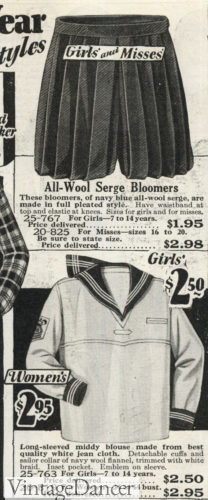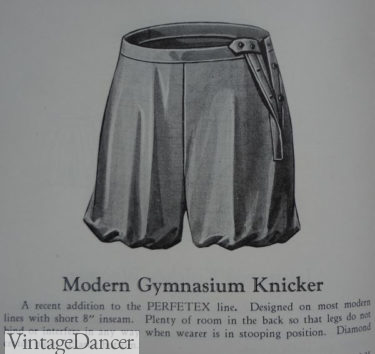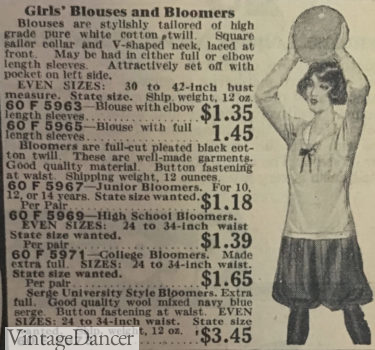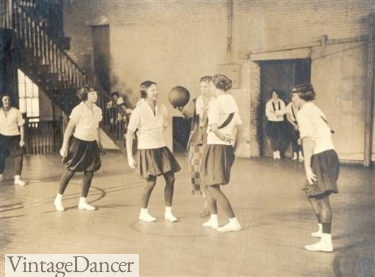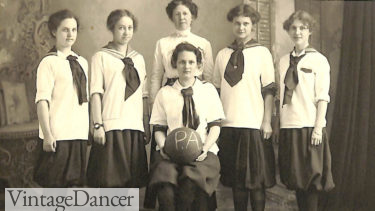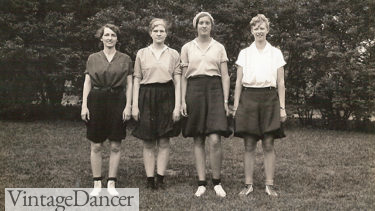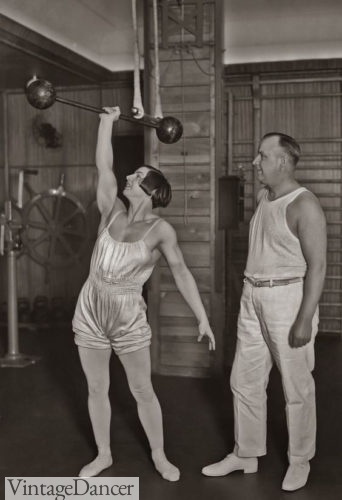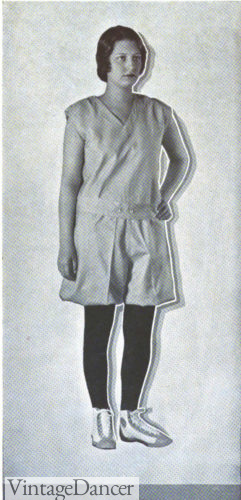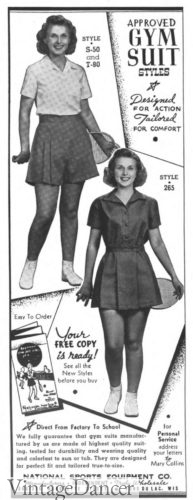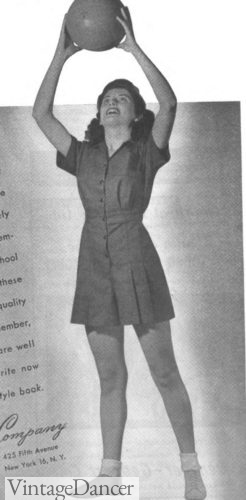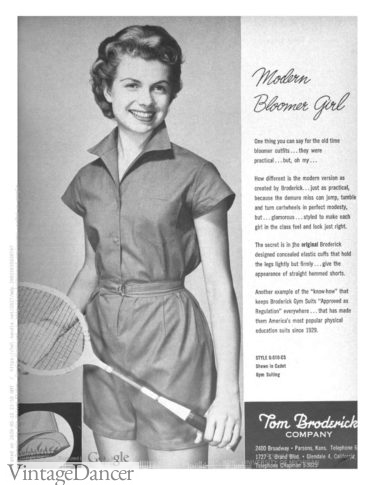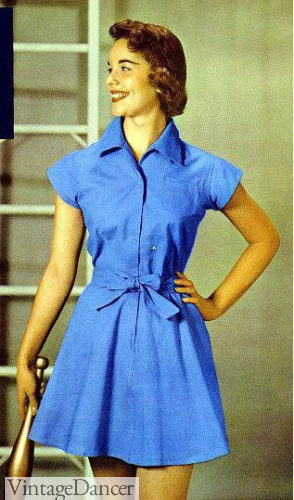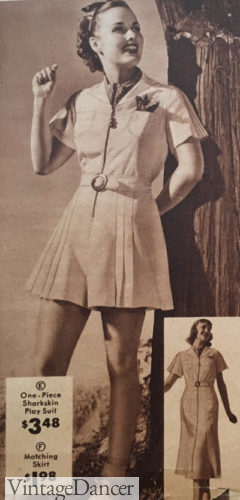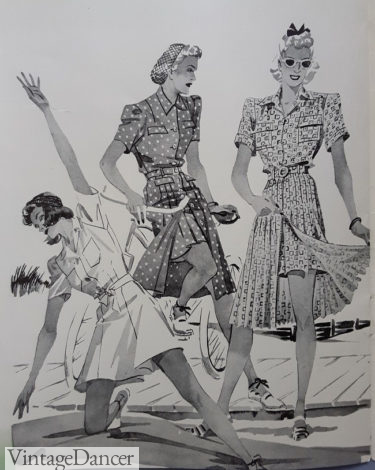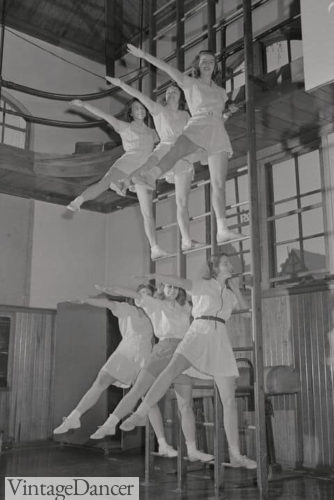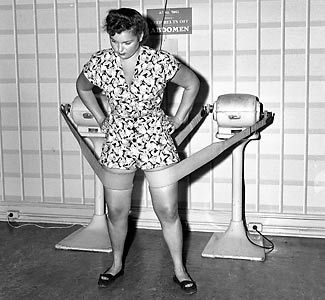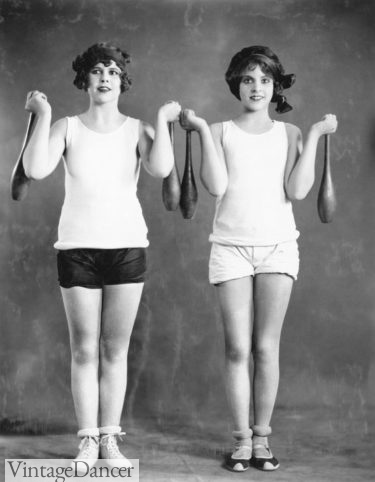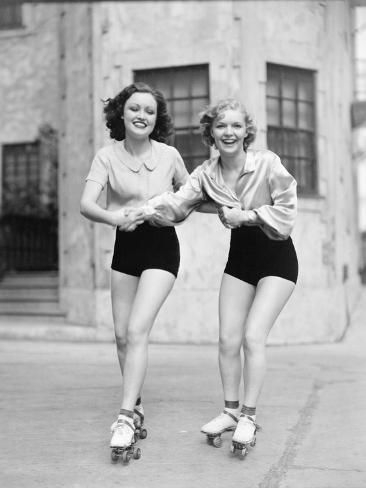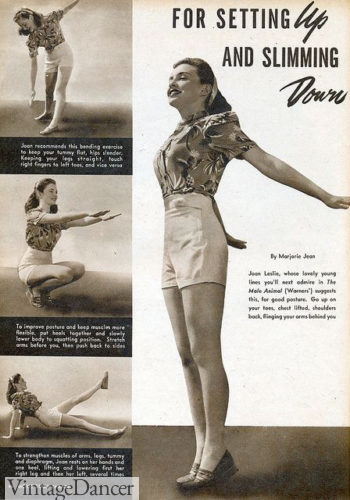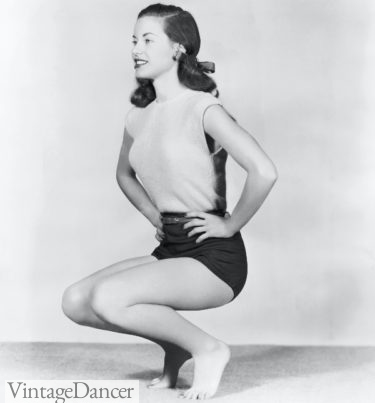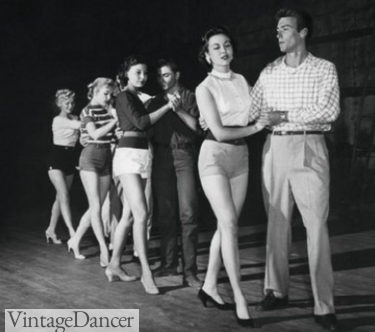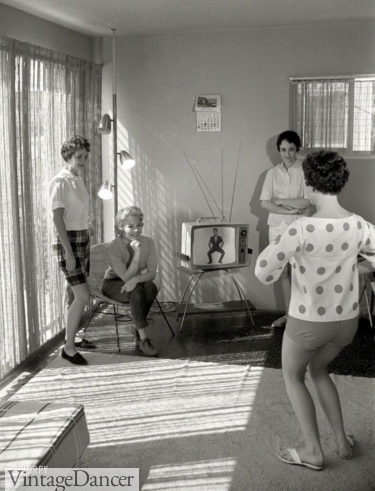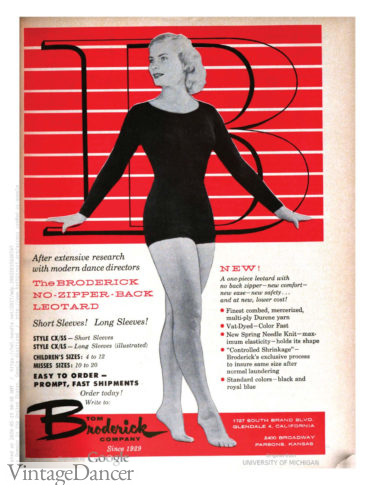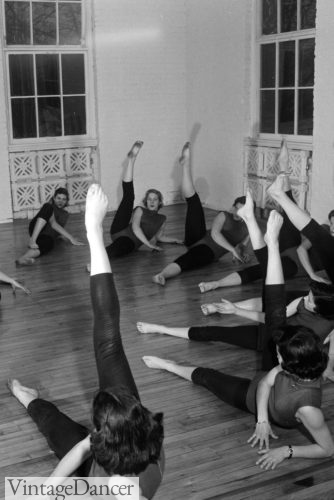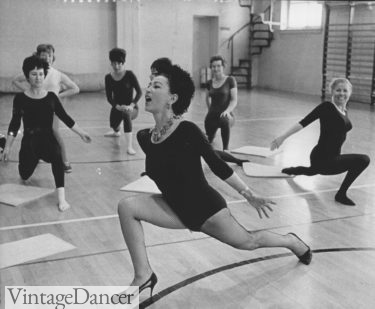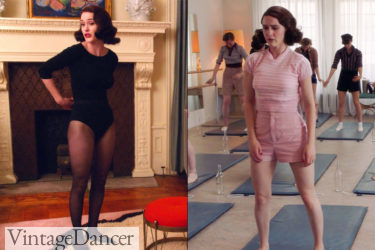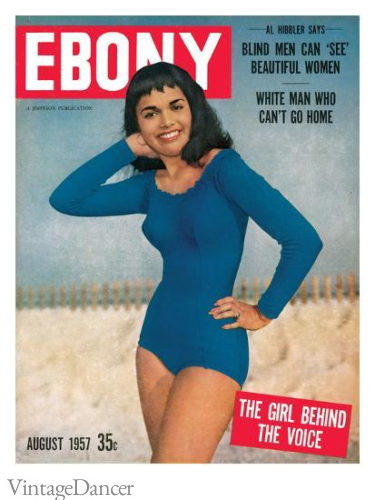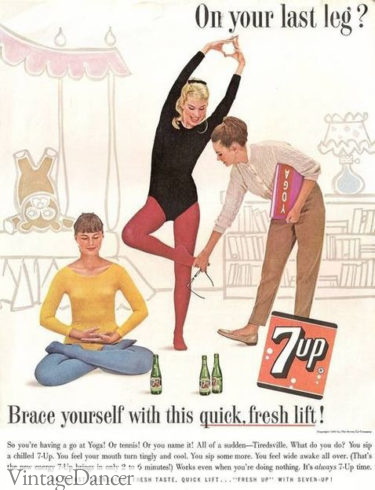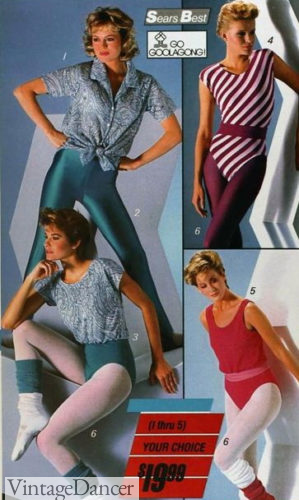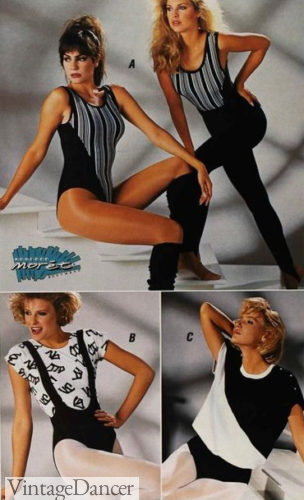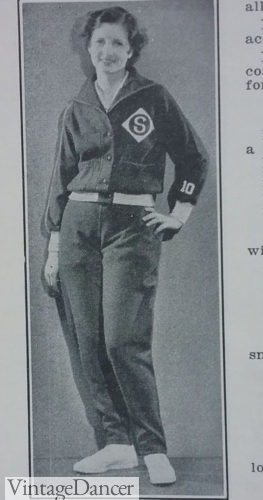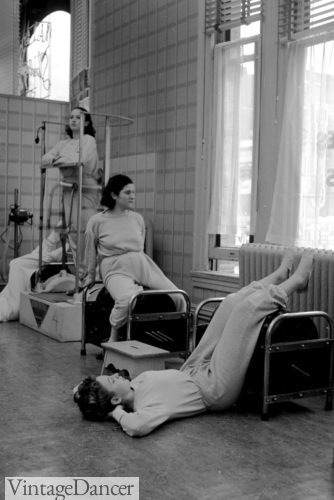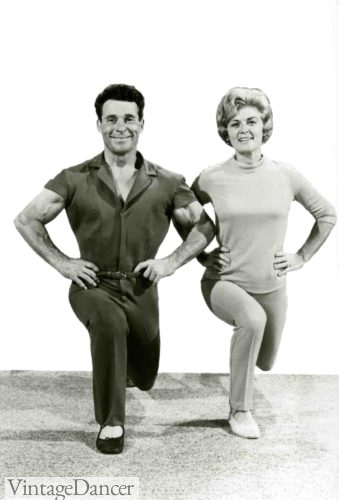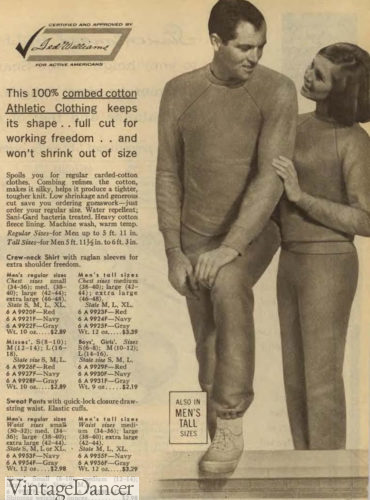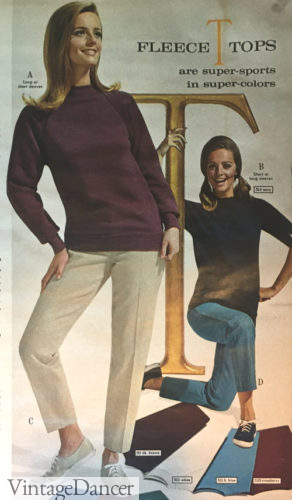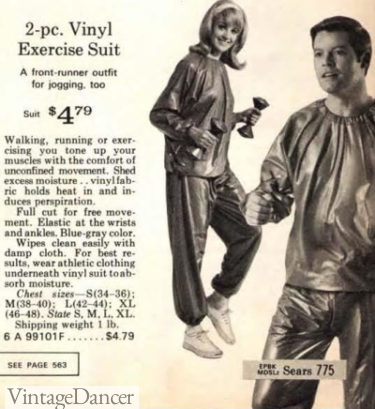What clothing did women wear to exercise, workout, or bring to the gym in the decades past? This topic has come up a few times recently. It is not one that is easily researched, and there is no one definite style for every decade. The variety of sport clothing women wore from the 1920s onward remained largely unchanged until the 1970s.
The bloomer shorts women wore in the 1900s were still being worn in the 1960s, although with a much shorter length. Shorts and tops separates were another timeless option. The details of the looks changed a bit, but for the most part, vintage workout clothes had a few options worn throughout the 20th century (1910s 1920s 1930s 1940s 1950s, 1960s 1970s 1980s 1990s).
For the history of men’s workout clothes read here.
Bloomers – 1920s Gym Clothes
By the 1920s, women and girls had been playing sports in bloomers for quite some time. It was a compromise between long skirts and men’s pants. Large pleated pant legs that were elastic cuffed at the knee created the bloomer shorts that were so full they looked like skirts instead of pants. Usually in navy blue or black, the bloomer short was paired with a white middy top in the 1920s. The middy was a sailor blouse with a colored necktie that could have long or elbow-length sleeves. Black stockings kept legs covered and modest. This was the typical girls Gymnasium class or sport team uniform up through college.
Women could wear the sport bloomers, too, however the association of the them with their childhood school days had many women avoiding them.
- 1928 bloomers and middy top
- 1929 bloomer shorts
- Mid 1920s bloomers, middy top , black hose
- Girls playing basketball
- George Fox university basketball team wearing bloomer knickers, middy top and neck scarf tie
- 1933 young women still wearing bloomers and middy tops
Swimsuit : 1920s -1930s Gym Clothes
For women who worked out indoors, in a small gym, at home, or in a woman’s only athletic club, the knit wool swimsuit was a better option in the late 1920s. The body hugging fit and the flexibility of knit made them more comfortable for exercise that required heavy movement, stretching, bending, and floor work. They were not to be worn for public sports because of how immodest they were. Even swimmers quickly put a robe on after a race in the pool.
The swimsuit would eventually be replaced by the leotard, but for the 1920s through 1950s, it wasn’t a bad choice. Swimsuits usually had a tank top top and a skirted bottom over a pair of attached shorts. They were knitted for flexibility — the perfect material for active wear.
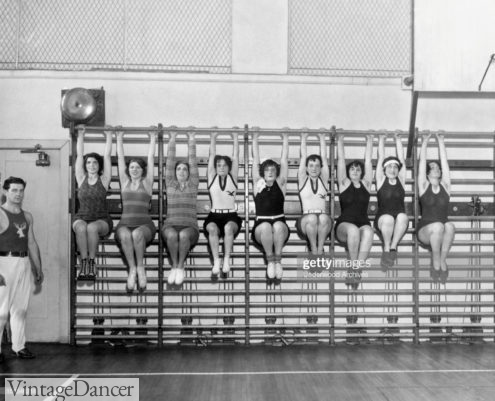
Wives of the members of the Philadelphia Elks organization workout at the club gym there, Philadelphia, Pennsylvania, circa 1929. (Photo by Underwood Archives/Getty Images)
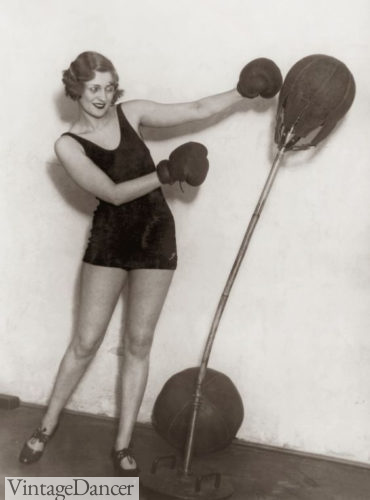
1925 boxing workout in a swimsuit
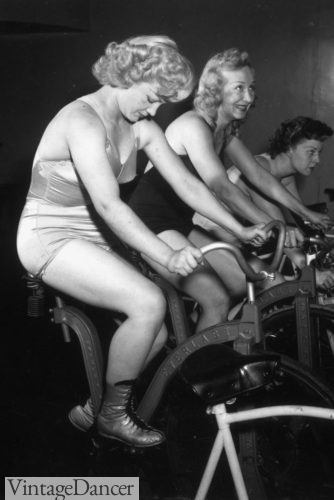
1950s cycling in swimsuits and leotards
Gymsuit: 1920s to 196s gym clothes
Back to girls, from gymnasium or sport clothes came the gymsuit, a romper-like outfit designed especially for athletics. Both girls and women wore a version of the gymsuit from the 1900s on up to the 1970s. The lower half was the bloomer shorts or a flared leg short with elastic leg shorts underneath. The top was an attached button back or button front shirt and a self belt around the waist.
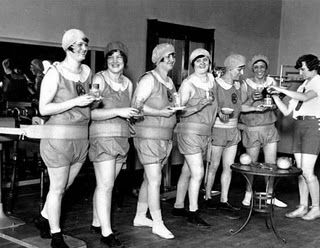
1920s gymsuits for women
The loose bloomer bottom was worn in the 1920s to the mid 1930s. The pleated skirt or shorts in the 1930s replaced the bloomer style, taking inspiration from women’s tennis dresses. Most continued to have a pair of inside elastic shorts or a band to keep them modest. The top became more tailored with a button down shirt. Waistlines rose back up to the natural waist and were accented with an optional adjustable slide belt. Colors choices were varied to match school or club colors.
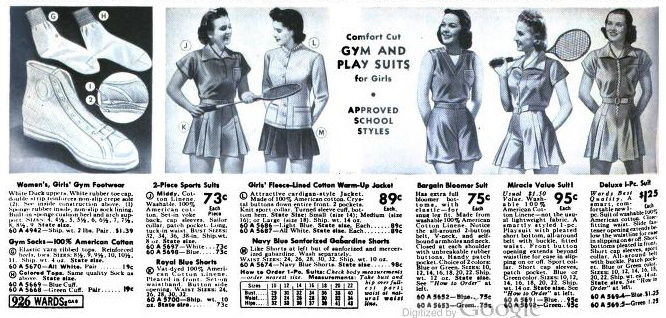
1930s gymsuits and sneakers
- A woman lifting a dumbbell in a gym circa 1930. (Photo by Max Haas/FPG/Getty Images)
- 1930 sleeveless gymsuit
- 1938 gymsuit (front) and skirt and top separates (back)
- 1946 gymsuit
- 1957 gymsuit
- 1950s blue gym suit with skirt
- 1962 teal gymsuit
The bloomer short never left the gymsuit uniform but experienced a stronger revival in the 1950s, when bubble swimsuits became vogue. The elastic leg hovered almost up to the hip, becoming visible for all to see. Needless to say, it was very unflattering and quickly left fashion in favor of the slender, non-pleated gymsuit.
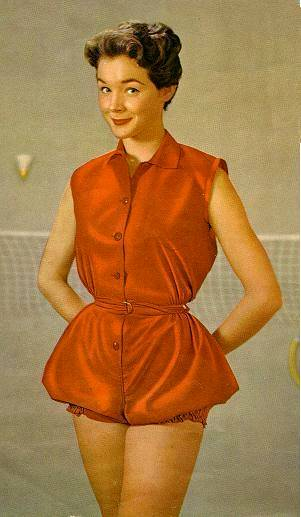
1950s red bloomer short gymsuit
The gymsuit was a hated garment by every school age girl who was required to wear them. Isn’t that the case with every school uniform? Looking back now, they are kind of cute. I would wear one.
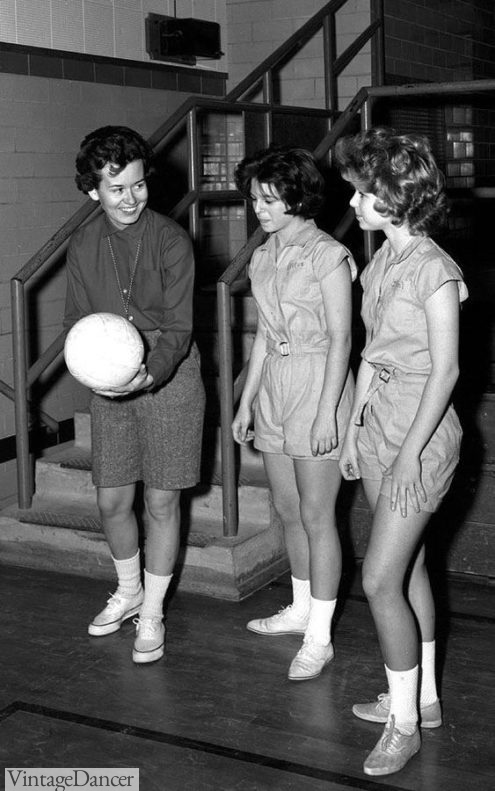
Belted gymsuits in the mid 1960s
Playsuit: 1930s to 1960s Gym Clothes
The playsuit was a gymsuit with matching wrap around skirt. Many gym teachers wore them because they were required to wear a long skirt or dress when not actively teaching gym classes. Girls and women wore them as part of their summertime casual, ensembles — usually to the beach or pool, but also to play casual sports.
The playsuit with skirt or dress topper emerged in the mid 1930s and lasted into the 1960s. Legs were roomy instead of the tight elastic of the previous years. They looked like short dresses with out the overdress and a masculine button down or zip shirt with collar on top. Belts were a nice touch that accented the waist. Most were made of cotton in solid or small patterns.
- 1938 playsuit with long cover dress
- 1939 playsuits for sport or casual
- 1940 gym girls in playsuit dresses
- 1950s workout in a floral playsuit
Professional sports teams adopted the playsuit-dress as an official uniform. The All American Girl Baseball League, founded in 1943, had uniforms designed by Mrs Wrigley, Wrigley’s art designer Otis Shepard, and player Ann Harnett. Players wore a one-piece short-skirted flared dress, satin shorts underneath, knee-high socks, and a baseball hat. Each team had a different colored uniform and team patch on the front. Taking inspiration from these specialty baseball uniforms, other team sports came up with their own variations.
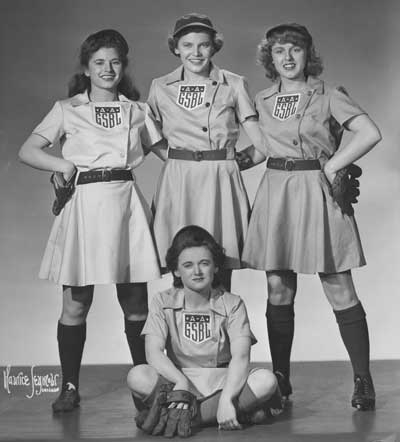
1943 baseball uniforms
The playsuit was renamed the romper sometime in the 70s. When made of terry cloth, they were a sportier version than the school-girl uniforms. Primary or pastel colors with a tie string waist and a zippered front, they were the cutest of all the gym outfits (in my opinion). Matching separates were more popular, however, so they never took off.
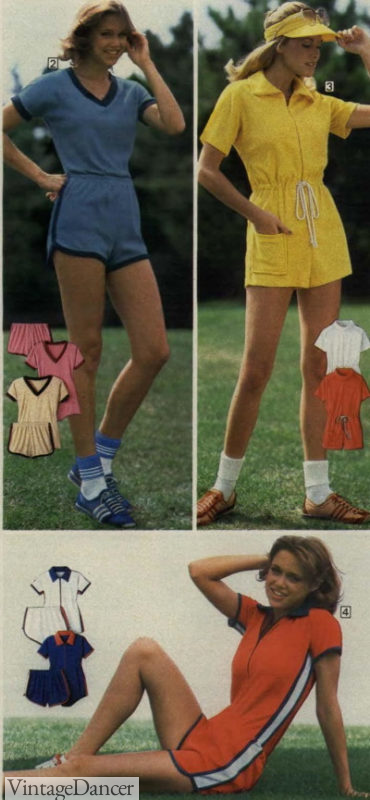
1979 rompers for workouts
Shorts and Tops Workout Clothes
While many sport teams used playsuit uniforms, there were other team and school sports that used more modern (i.e. masculine) pairings of top and bottoms. These began far back into the late 1920s with girls in wide shorts (still elastic leg) and a knitted jersey top with a contrasting round or V neckline and short sleeves. They appear quite modern for the 1920s!
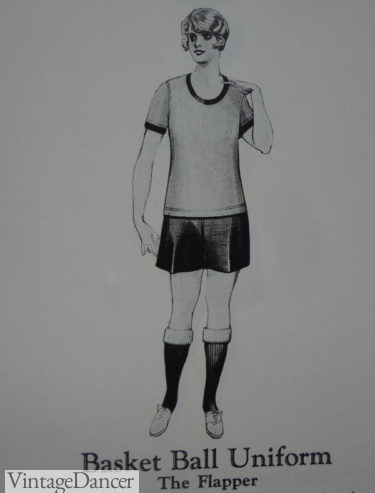
1920s girls basketball uniform “The Flapper”
The 1930s continued to favor separates for serious sport players, with them ultimately becoming mainstream by the end of the decade. Women wore either pleated shorts/ skorts or a more fitted short based off of men’s shorts. Satin was the preferred materiel for sports clothing, with khaki cotton as a durable alternative.
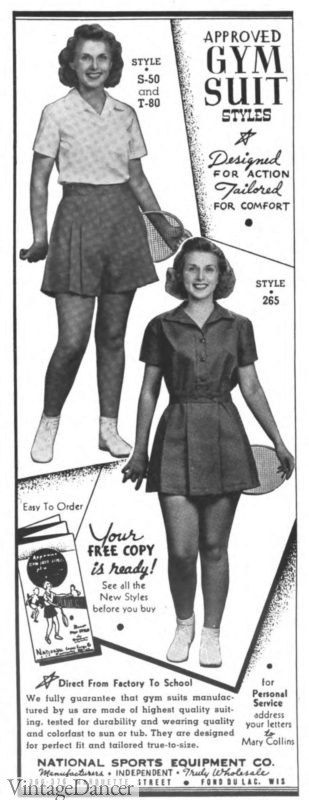
1938 gymsuit (front) and skirt and top separates (back)
The preferred top in the 1930s and 1940s was a button down blouse with short puff sleeves or simple caps sleeves. This top remained a classic well into the 1950s, with only the shorts becoming shorter and tighter as the years progressed.
The knit top replaced the blouses in many cases in the late 1940s. Necklines were modest and sleeves long, short, or sleeveless.
It wasn’t uncommon for women to do home workouts or attend small local classes in their street clothes. Specially uniforms or gymclothes were unusual outside of team sports.
- 1920s shorts and ribbed tank top
- 1930s shorts and blouses
- 1941 shorts and tropical blouse
- 1950s short and knit top
- 1950s Clint Eastwood practices with women in shorts and knit tops
- 1960 at home workout to the Jack LaLanne show
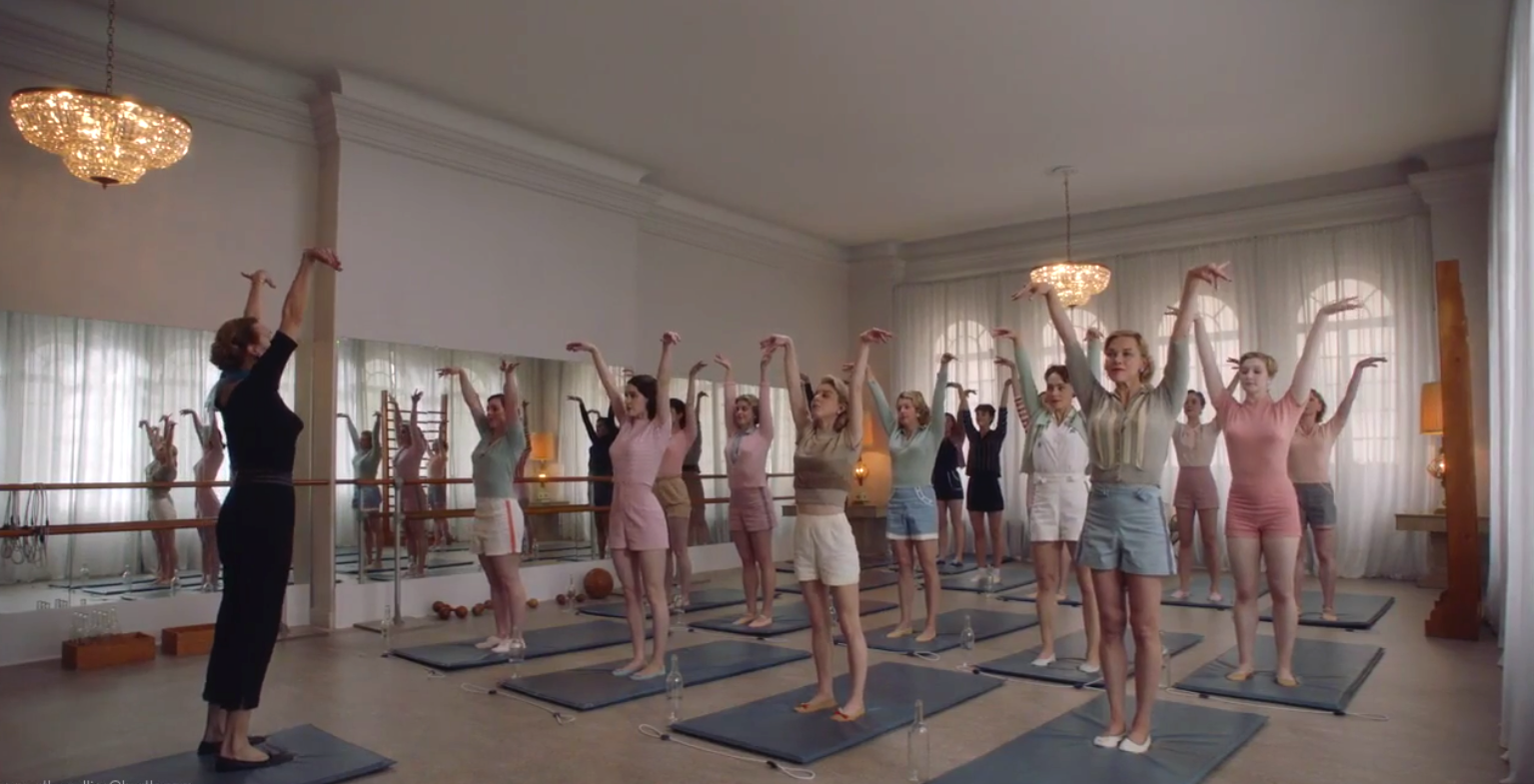
1957 Marvelous Mrs. Maisel goes to class in shorts and a knit top. Watch the scene here.
Satin pants or regular cotton pants could also be worn with a non-aerobic workout. Below, these ladies wear a leotard or knit top with satin pants for weight lifting:
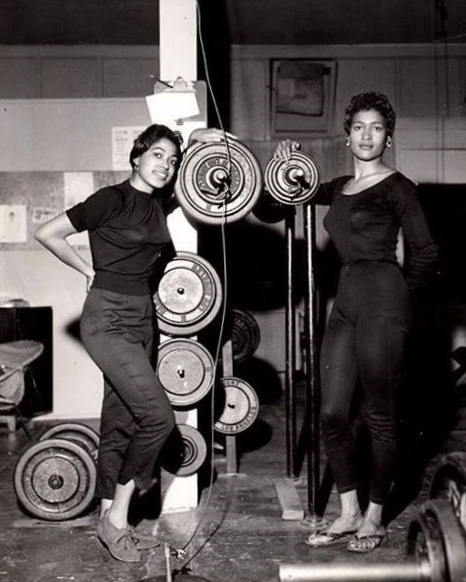
1950s weight lifting ladies
Leotards : 1950s Gym Clothes
In the 1950s, the swimsuit idea was reinvented in the form of a leotard which was also copied from circus performers/ trapeze artist costumes. With non-wool fabrics such as nylon now available, the swimsuit-turned-leotard was a comfortable, flexible and thin “second skin” for dancing, yoga, gymnastics, aerobics and even weight lifting. The ’50s leotard featured a wide scoop neck, long sleeves, full coverage over the hip, and sometimes a zipper down the back. They were paired with black tights in the early to middle years, and footless leggings in the later years. Some performers and dance instructors wore fishnet tights!
- 1957 leotard
- Leotard and leggings
- Mr. Tullah Hanley leotard with fishnet tights and heels
- Mr.s Maisel wears a Leotard and tights on the left
- 1957 tea scallop neck leotard
- 1963 yoga class in leotards and tights
More tights colors and leotard colors entered in the 1960s, where it was fashionable to be cheerfully dressed. Pastels turned to electric mod colors and then earth tones by the 70s. Tights no longer needed to match — mixing them up was perfectly chic. In the 1970s, it was back to matching sets, which was thought to help the body appear slimmer.
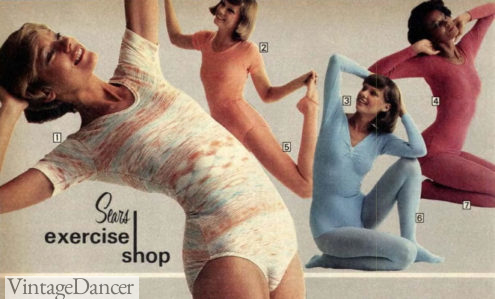
1977 leotards
Sleeves also shortened, patterns were introduced (but not very popular), and some shaping around the bust began in the 1970s. Lycra instead of nylon was the latest invention in flexible fabrics.
Next came the unitard, a full body leotard and tights in one (with optional skirt for modesty going home). With long sleeves and a high neck, they were designed to make you sweat off the weight.
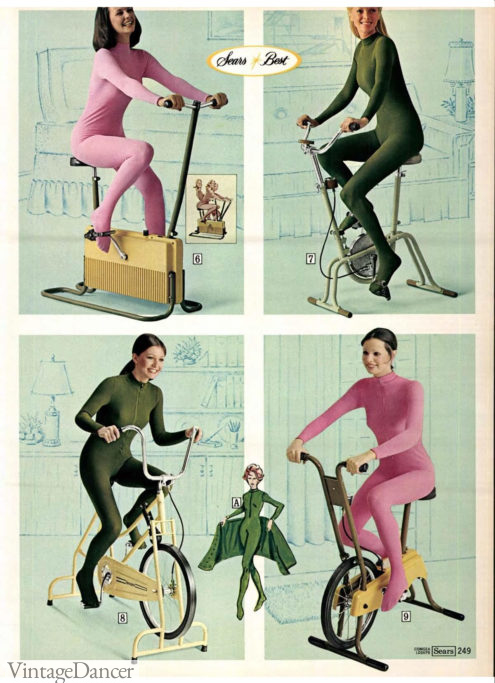
1974 home workout
Wearing leotards wasn’t just for dance classes. Women wore them for the new fad of having “home gym” equipment. Cycling, rowing, treadmills, and belt massagers (those machines that supposedly shake your fat off). They also took to the Disco dance floor with long wraparound skirts, nude hosiery, and high heels. The slinky, shiny Lycra with a less-than-modest top and open back was sexy and cool.
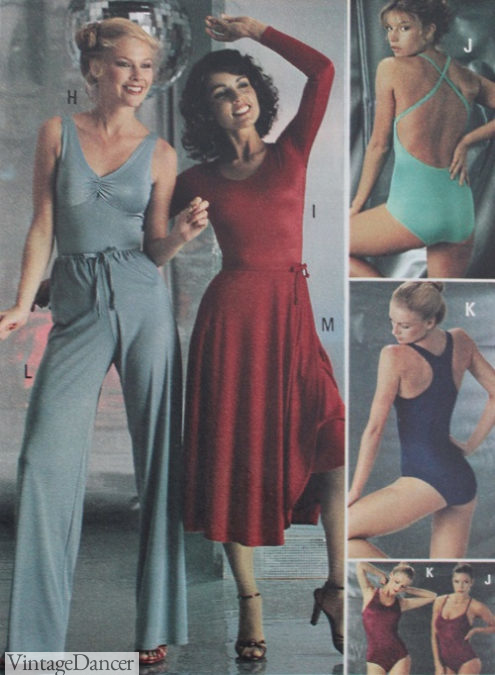
1978 dance clothes and leotards
The 1980s amped up the full body suit and leotard/leggings combo. Now they came in more graphic patterns and stripes in metallic colors with narrow belts, leg warmers, sweatbands, and high top white sneakers. I still remember watching the ladies who did “Jazzersize” at the YMCA come out after class like glistening rock stars. I couldn’t wait to be old enough to join them.
- 1986 metallic or jersey leotards and leggings
- 1987 black and white was the “in” pattern for workout clothes
Sweats
Not all workout clothes needed to be skin-tight. The sweatsuit was mostly a men’s workout set for the first half of the century. Women on a mission to reduce weight did wear them, with the idea that they made you sweat more. They came an acceptable casual outfit in the mid 60s. Cotton on the outside and fleece on the inside, the crew neck style has changed little since my first sighting in mid 1920s.
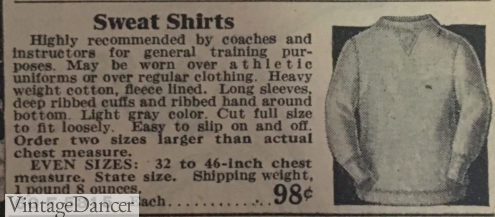
1920 Sweatshirt
- 1935 sweatsuit for coaches
- 1940s sweatsuits
- 1959 Jack and Elaine LaLanne hosted a TV workout show wearing sweats
- 1965 his and hers sweatsuits
- 1967 sweatshirts and knit pants
- 1969 Vinyl sweatsuits
The vinyl sweatsuit was the ultimate in sweat-causing workout outfits. It morphed into the windbreaker tracksuit in the 1980s, which was a bit cooler to wear and cooler looking.
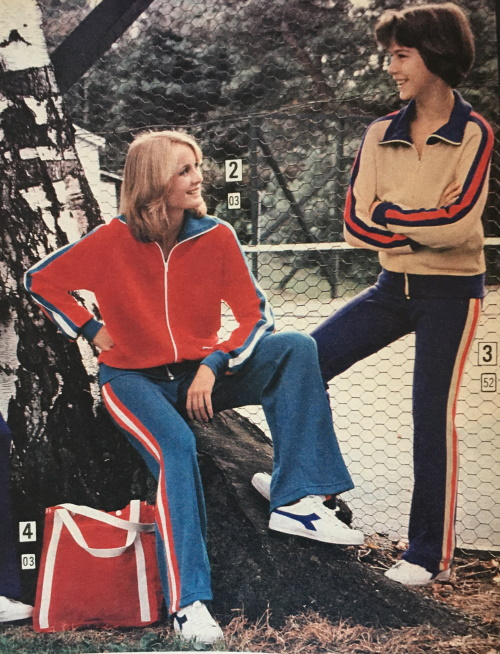
1979 women’s tracksuit
The 1970s and 80s workout clothes need their own article, which I am working on. In the meantime, look at more pictures at the end of the page here.
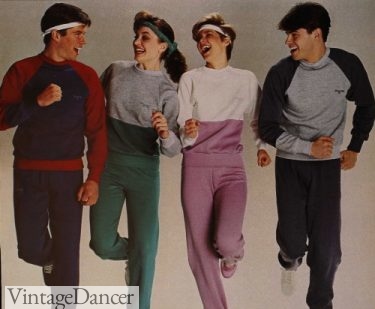
1985 sweat suits
Workout Shoes
Before the athletic sneaker revolution, exercise footwear has a few limited choices that are still around today. The high top canvas Converse shoe and low top Keds rubber sneaker have been around since the 1900s. They were initially designed for indoor basketball courts. Many schools adopted them as the official gym shoe, even for girls.
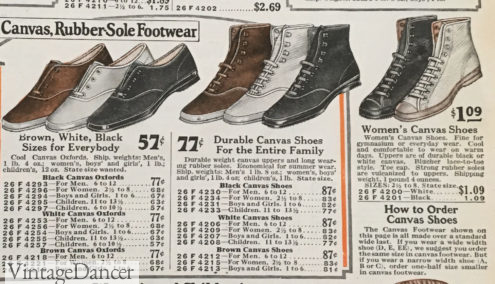
1927 sport shoes
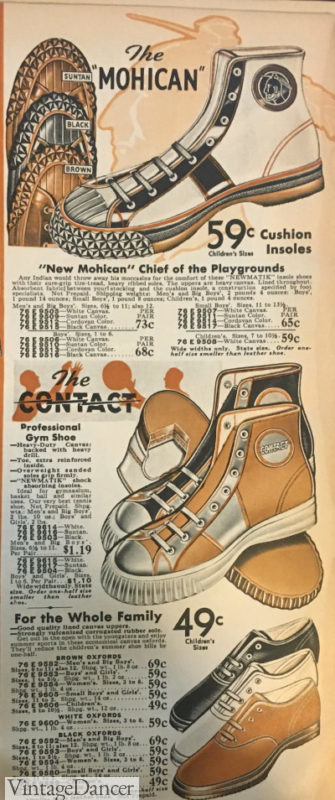
1937 high top and low top canvas sport shoes
Others chose the low top version in white, which also became a popular tennis shoe. In the 1930s and 1940s, the low top canvas sneaker was the typical sport shoe worn with gymsuits, playsuits, tennis shorts, and tennis dresses. They continued to be worn in the 1950s and 1960s as a causal everyday shoe in a range of fun colors.
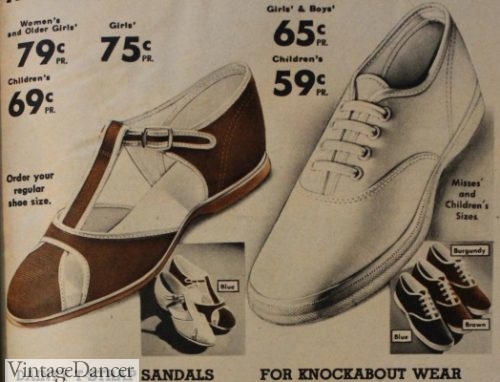
1930s sneakers and canvas sandals
Women who wore their “normal” clothes to do light exercise in opted for a comfortable pair of loafers or even a pair of sandals. Bedroom slippers were another idea, since the soft soles didn’t scuff wood floors. Some women wore high heels to strengthen and shape their calves.
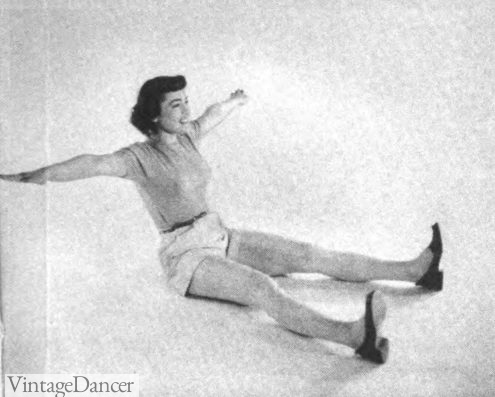
1955 working out in loafers
In the 1950s, the ballet slipper was the pretty little shoe worn to dance classes. Women back in the 1920s and onward also had the opportunity to wear a ballet slipper or a canvas single strap Mary Jane shoe. These simple shoes were worn at the beach and pool, too.
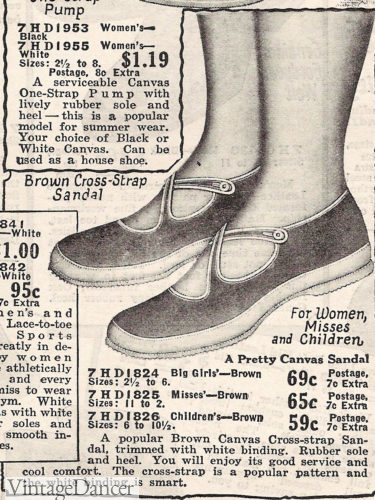
1927 Canvas Beach Sandals
Another type of early gym shoe was the flat leather lace up shoe, also know as a bowling shoe. The style hasn’t changed much since then, expect for the bright colors in the 1960s.
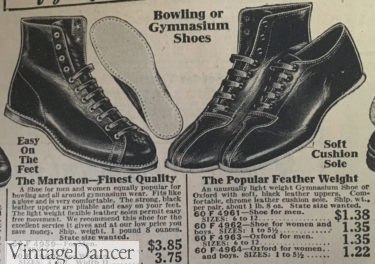
1928 Soft sole gym shoes
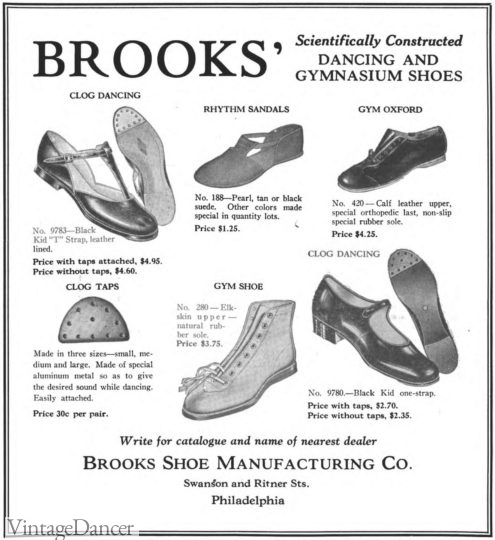
1930 dance and gym shoes: T strap tap shoes, rhythm sandals, gym oxfords, high top sneakers, dancing heels
The sneaker shoe as we know it today took hold in the 1970s, when running became the latest fitness craze. Most of these retro sneaker shoes are back in style now.
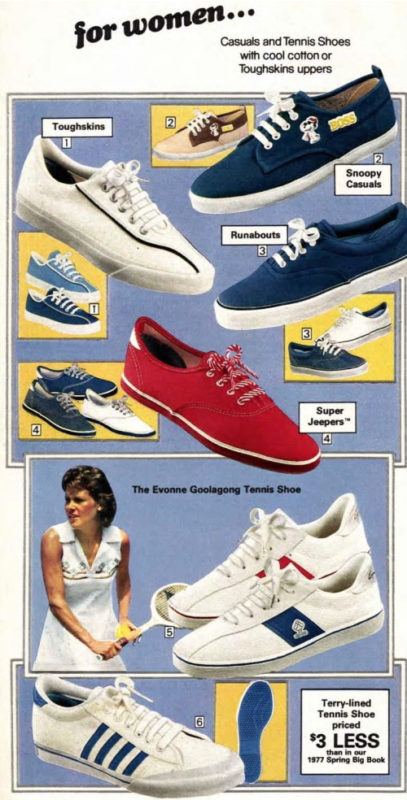
1978 women’s sneakers
And that concludes this brief look at women’s vintage workout clothing. It is by no means exhaustive of all the variations of clothing worn for specific a sports such as tennis, field hockey, riding, hiking, bowling, and social dance. They each have their own history and distinct style that incorporated most of the above types.
What if you want to dress in vintage or retro workout clothing today? I hope you can see you have many options to choose from based on your level of activity and willingness to sweat. I have yet to find a designer making retro style workout clothes with modern tech fabrics.
The 1970s revival has brought back dolphin shorts, tracksuits, and retro sneakers, but for earlier styles the choices are limited. Specialty dance stores might have some more options with leotards and skirts, shorts (volleyball shorts?), and tights. Earlier decades will need to use comfortable street clothes such as a high waisted shorts and a knit top or a loose fitting playsuit/romper. I can’t speak from personal experiences with any of these, so if you wear vintage clothes for a workout, please tell me about them.
Shop Retro Gym Clothes
Debbie Sessions has been teaching fashion history and helping people dress for vintage themed events since 2009. She has turned a hobby into VintageDancer.com with hundreds of well researched articles and hand picked links to vintage inspired clothing online. She aims to make dressing accurately (or not) an affordable option for all. Oh, and she dances too.
